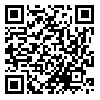Background and Aim: In Iranian traditional medicine Citrus Aurantium flower extract is used to treat some neural diseases. Tendency to use medicinal herbs is increasing. The present study was done to determine the effect of Citrus Aurantium flowers on sleeping time and the level of anxiety in mice.
Materials and Methods: In this experimental study, 80 male albino mice (25-30 g) were randomly divided into 8 equal groups. In order to measure the sleeping time of the subjects. Angel’s method was applied and the animals were divided into three experimental groups (200, 400 and 600 mg/kg) and one control group. To evaluate their anxiety levels they were randomly divided into three experimental and one control group; and for their evaluation plus maze (EPM) model was used. The evaluation of anxiety indices included number and percent of time spent in open arm.
Different doses of the aqueous extract of Citrus Aurantium flowers (200, 400, 600 mg/kg IP; respectively) were intraperitoneally injected into the treated groups. But, the controls received 10 ml/kg/BW normal saline intraperitoneally in both of the methods. The obtained data was analyzed by means of SPSS software (V:17) using one-way ANOVA and Tukey’s test(α=0.05).
Results: The extract of Citrus aurantium flowers (200, 400 and 600 mg/kg) significantly increased sleeping time (12.2±0.53), (14.4±0.37), (15.5±1.22), time-spent of open arm entries (64.4±0.41), (75±3.01), (78±2.01) and arm entries into open arms(5.9±0.21), (6.6±0.41), (6.8±0.72) compared to the control group (P<0.05).
Conclusion: The current study showed that the aqueous extract of Citrus Aurantium flowers incerases the sleeping time and decreases level of anxity in mice.
Received: 2016/05/13 | Accepted: 2016/11/14 | ePublished: 2016/12/13
| Rights and permissions | |
 |
This work is licensed under a Creative Commons Attribution-NonCommercial 4.0 International License. |
